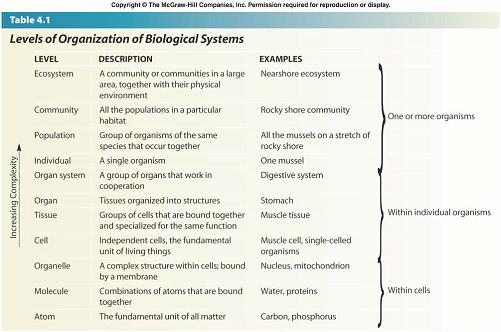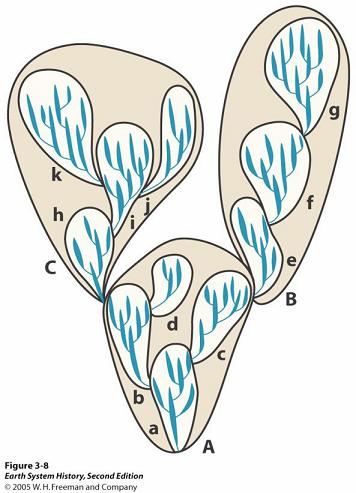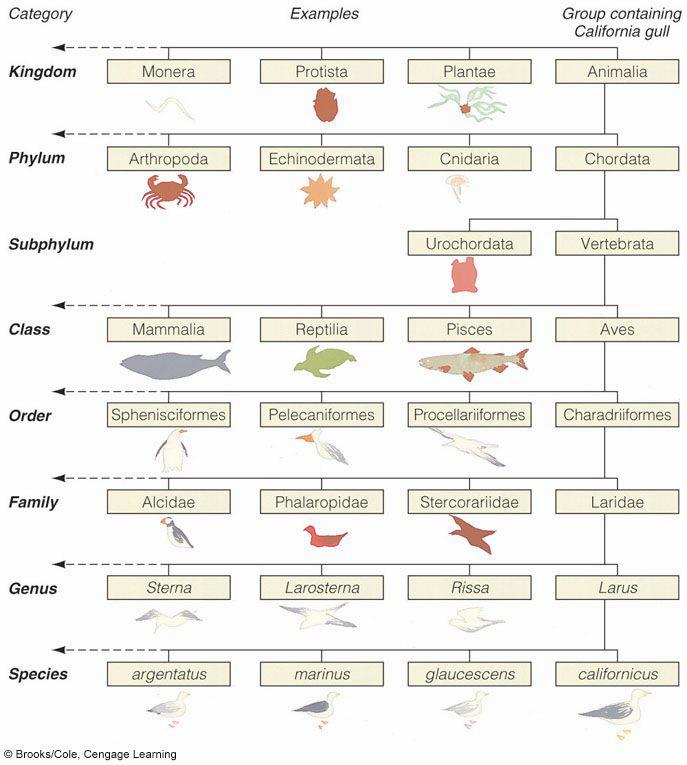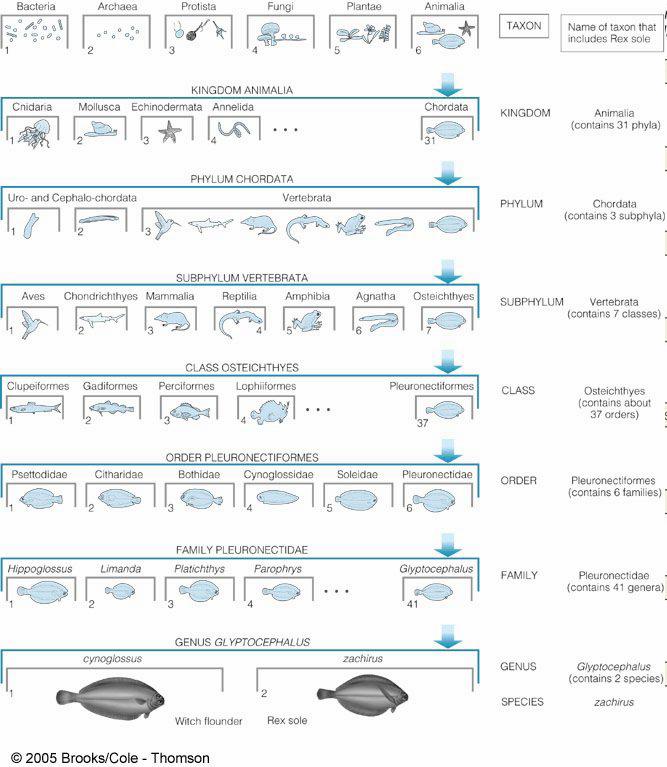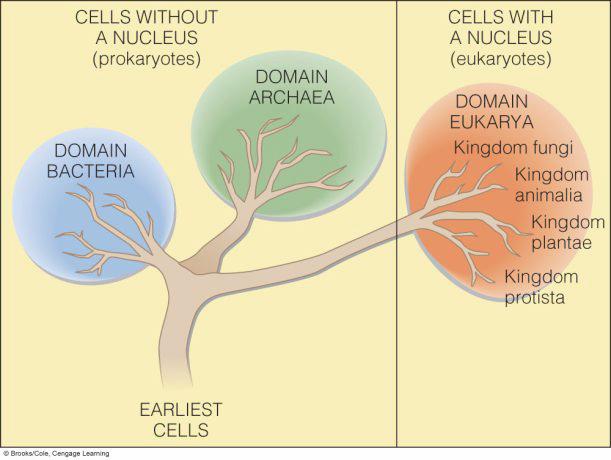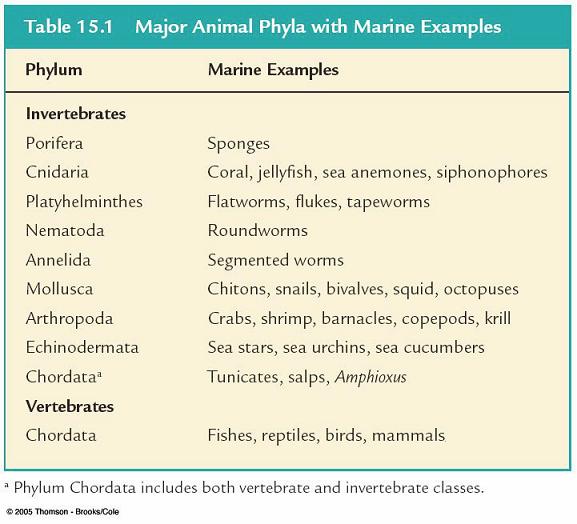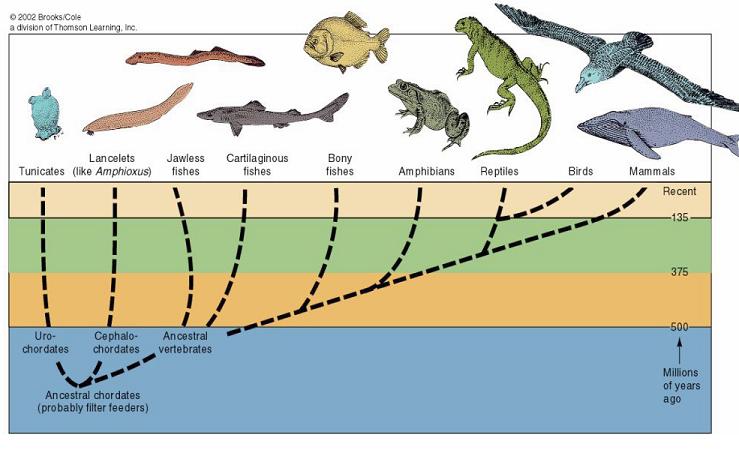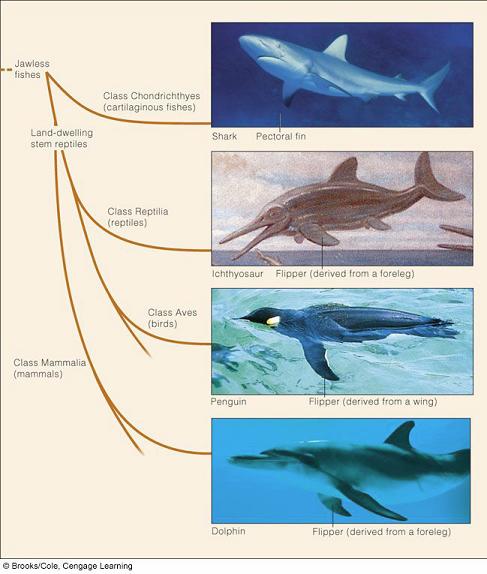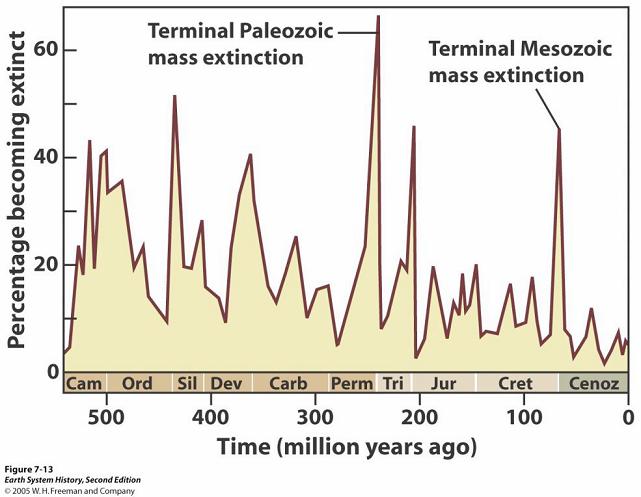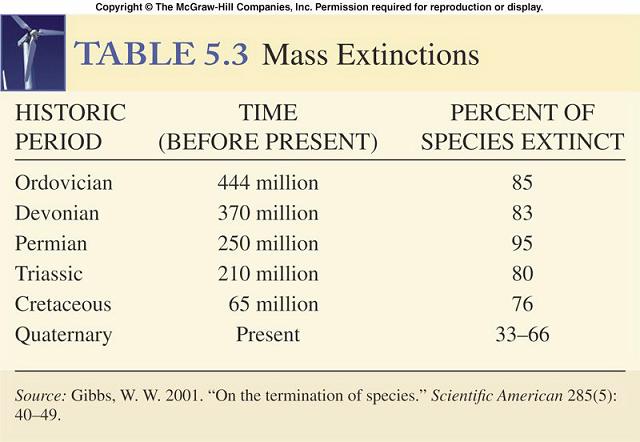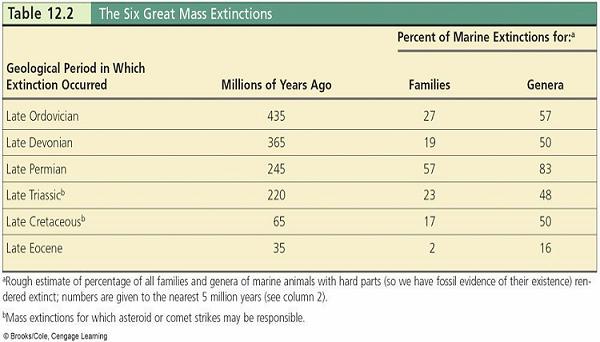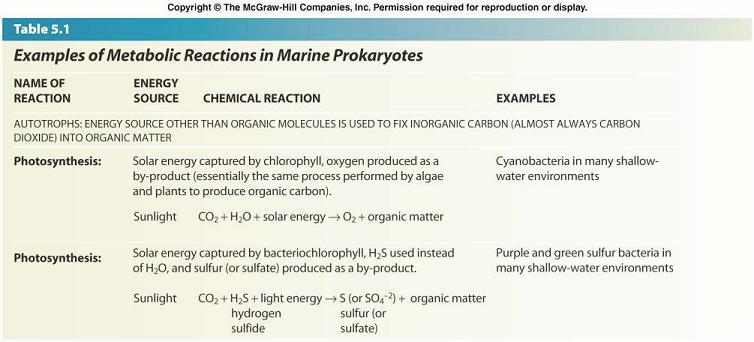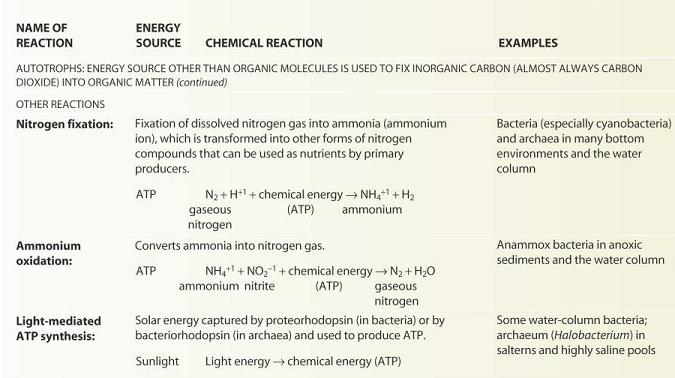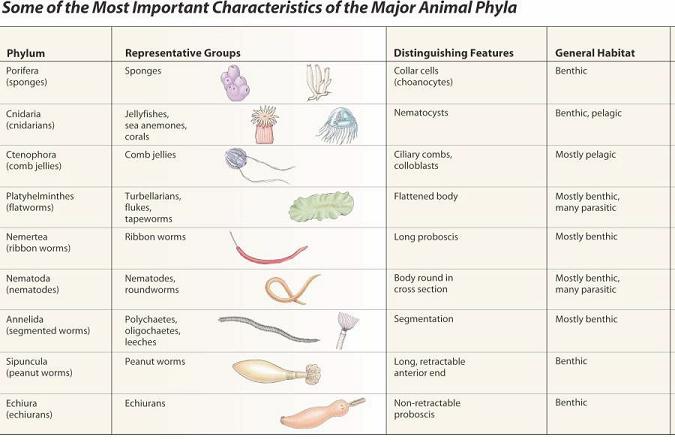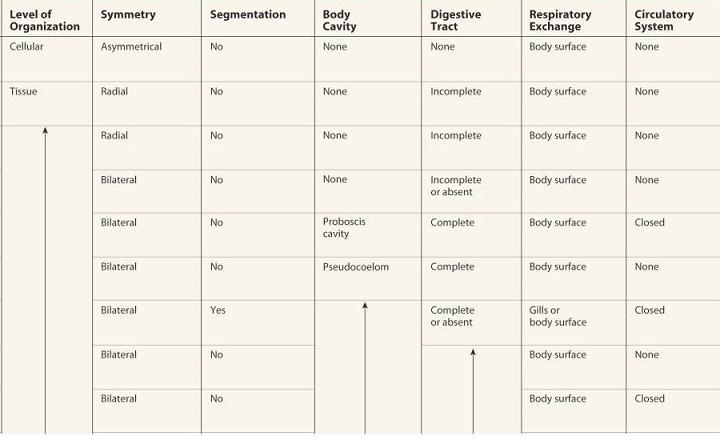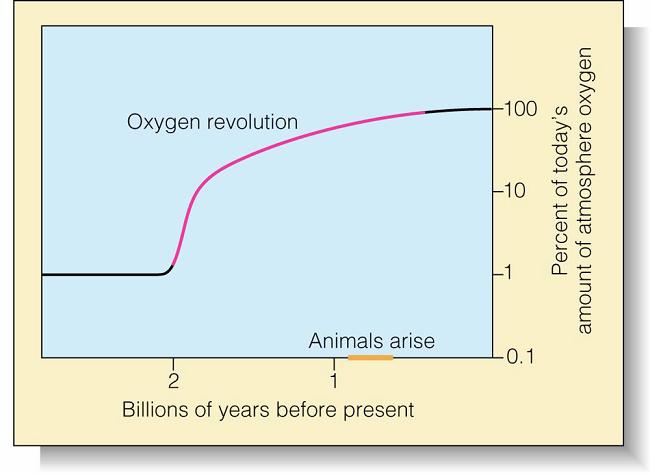 | Classification & Change |
|
Species, Genus, Family (exemplar, vid,pod) |
|
|
|
6 Kingdoms of life |
|
|
|
|
|
|
|
|
|
|
|
|
|
|
|
|
|
|
Classification & Systems of Liiviing Thiings
Ľ Hierarchy: Biosphere to Atom
Ľ Taxonomy (classification & naming)
ľ Artificial, Linnaean, Natural; The ô6 Kingdomsö
Ľ Phylogeny (evolutionary relationships)
Ľ Species Diversity
ľ Abundances; Some mechanisms for speciation
Ľ Ecosystems (= community + habitat)
Ľ Communities (of different species)
ľ Change; Interactions (+, ľ, o)
Ľ Populations (of one species)
ľ Distribution patterns; Growth & change; Limiting factors
Mass extinction
Hierarchies
Ľ Biosphere = The sum total of living things on Earth and the
areas they inhabit
Ľ Ecosystem = A functional system consisting of a community,
its non-living environment, and the interactions between them
ľ = Community + Habitat
Ľ Community = Set of populations of different species living
together in a particular area
ľ Habitat = an organismĺs ôaddressö in the community (location)
ľ Niche = its ôjobö there (relationships to food, enemies, etc)
Ľ Population = A group of individuals of one species that live in
a particular area
ľ Distribution patterns; Growth and change; Limiting factors
ľ Competition - For resources (food, light, space, etc) - Between and/or
within populations
Ľ Organism = An individual living thing
Ľ Organ ! Tissue ! Cell ! Molecule ! Atom
Ecology = The study of distribution and abundance of
species and their relationship to the environment. (The
study of ecosystems.)
TAXONOMY
= The study of biological classification -- Classifying & naming
Ľ Artificial system of classification = Morphological
ľ e.g., by structural similarities alone (even Aristotle did this for
animals)
Ľ Linnaean (18th c.) = Hierarchical
ľ Kingdom ! Phylum ! Subphylum ! Class ! Order ! Family
! Genus ! Species
ľ Genus + Species = scientific name)
Ľ Natural (modern)
ľ By common underlying natural origin - makes structural and
evolutionary sense
ľ Phylogeny = Adds the time factor; branching through time
Ľ The ô6 Kingdomsö
Using 3 domains -- Archaea, Bacteria, and Eukarya -- shows
evolutionary relationships even betterůItĺs based on molecular
sequencing studies.
For example, molecular phylogeny indicates that superficially
dissimilar groups such as plants, protists, animals, and fungi are
actually closely related!
An example from the oceans
Marine foraminifera of genus Globorotalia --
recovered from complete, uninterrupted,
well-dated sections of deep-sea cores --
indicate an evolutionary line of descent that
produced at least 4 species of this genus
over a span of ~8 million years.
Diversity of Life
1. All populations have the potential to increase in size
2. Many populations retain a constant size
Ľ Many individuals die young (limited carrying capacity)
3. Individuals in a population differ in their abilities
Ľ Some of these abilities affect survival
4. Best-adapted individuals are most likely to survive and
produce offspring (natural selection)
Ľ Some ôabilitiesö (heritable traits) are passed on to offspring
(genetics)
5. Net result: Over time, the ôabilitiesö of the population shift to
include advantageous traits -- Populations change with time
to become better adapted to their environment (evolution)
Note:
Natural selection affects individuals
Evolution affects populations (individuals do not evolve)
Variation is a result of
(1) Mutations and
(2) Reproduction
Errors occur in DNA Replication
On average, 1:10,000-100,000
genes per individual per generation
Errors are increased by exposure to radiation, etc.
Most mutations are ôbadö or at least neutral
What is ôadvantageousö depends on
environmental conditions
Example: Microbe
Resistance
